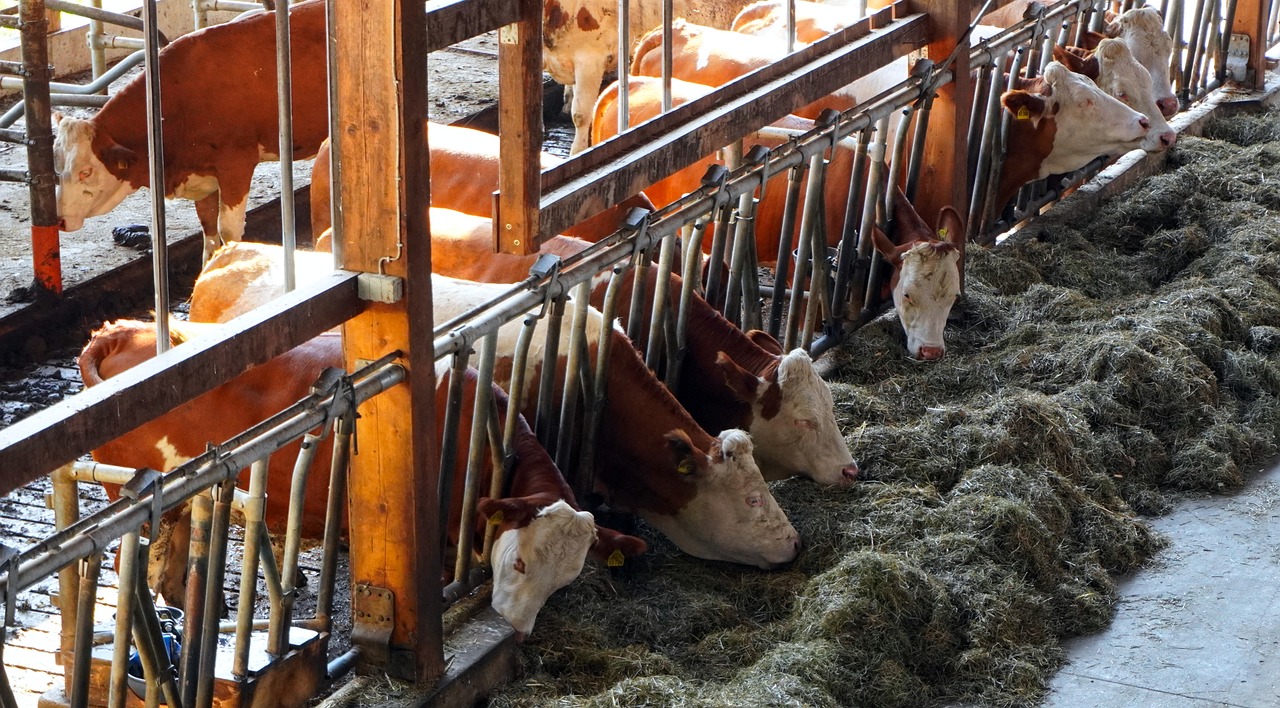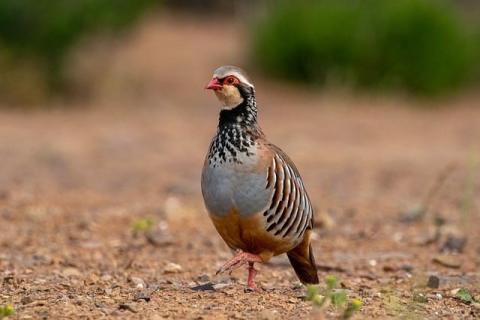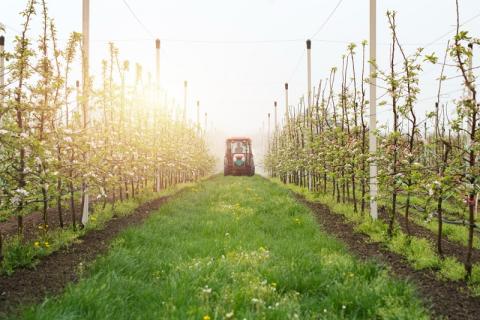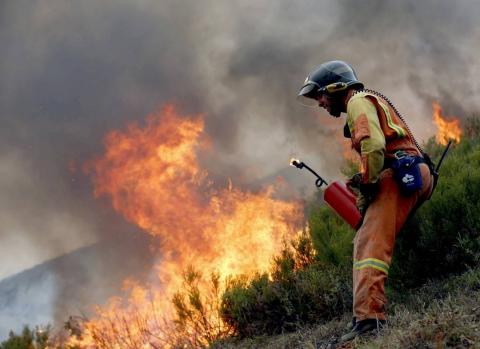Reactions: Analysis of 2013 data estimates that most CAP funds go to emissions-intensive animal production
Eighty-two percent of EU farm subsidies articulated through the Common Agricultural Policy (CAP) financed high-emission livestock production in 2013, according to a study published in Nature Food. The analysis, which is based on data from 1986 to 2013 - the latest year for which records are available - highlights that 82% went to animal products in the following proportions: 38% directly and 44% for feed production. The authors note that food of animal origin is associated with 84 % of the greenhouse gases emitted by EU food production.

Mario Díaz - PAC
Mario Díaz Esteban
CSIC research professor in the Department of Biogeography and Global Change at the National Museum of Natural Sciences and coordinator of the PTI-Agriambio platform
It was a relatively well-known fact that European agriculture was not based on the environmentally and socially sustainable production of healthy and affordable food for European citizens. This was the original objective of the Common Agricultural Policy (CAP), the first fully common European policy, which has managed a large part of the European budget since its inception. Successive reforms, focused on decreasing production by compensating farmers' income losses through subsidies, have proved ineffective in this regard, as neither farm incomes have become more balanced (less than 20% of CAP funds reach the majority of farmers, while 80% go to large landowners and the agri-food industry) nor have environmental problems decreased, quite the contrary.
The results of this paper clearly highlight this reality, focusing this time on analysing how CAP funds flow through the market to their final destination. The results are as solid and clear as they are devastating: more than 80% of CAP funds, which come from European citizens' taxes, end up financing the meat industry, and not precisely that based on extensive livestock farming, of great environmental and social value through the maintenance of traditional pastures and agro-livestock landscapes, but intensive farming, based on industrial macro-farms, as reflected in the fact that most of this subsidy is indirect through subsidies for the production of feed for livestock.
The paper has only been able to analyse data up to 2013 (unfortunately, updated data is missing), so it has not been able to address the potential effect of the last two CAP reforms, both aimed at reducing the importance of direct payments based on past production and area and number of heads managed (Pillar I), which is the ultimate cause of the result of this paper (80% of subsidies end up in agribusiness, which bases its business on macro-farms).
The previous reform introduced Pillar I green payments, which financed supposedly environmentally beneficial practices, and the current reform imposes the need to set social and environmental objectives that must be directly assessed. Green payments have proven to be ineffective due to their low ambition (Concepción et al. 2020, Pe'er et al. 2022), while the Green Architecture of the current CAP is continually being pushed downwards by the agribusiness industry with any conjunctural excuse, such as the war in Ukraine (Morales et al. 2022) or the drought and its effects on farmers' incomes, the basis of the demonstrations of the last few weeks.
Let us hope that the results of this work put the focus in the right place to direct the huge CAP funds to their declared objectives: once food sovereignty has been achieved, the negative effects of the CAP on the environment (pollution, loss of biodiversity) and rural societies (rural abandonment, speculation, inequality; Díaz et al. 2021) must be reversed.
Tomás García - PAC EN
Tomás García Azcárate
Agricultural economist specialising in the Common Agricultural Policy and agricultural markets, associate researcher at CEIGRAM, member of the Advisory Council on European Affairs of the Community of Madrid and of the Committee of Experts of Foro Agrario
My first reaction is indignation. With data from 10 years ago, the article should have been titled to the past (supported) and not to the present.
Since then, [2013] there have been changes in the CAP, some as important as the eco-schemes, which are intended to promote environmentally friendly practices. Now, let's talk about the methodology. CAP direct payments are divided into two main groups: decoupled payments, i.e. payments that are not linked to a specific crop or animal, and coupled payments.
With the latter, it is easy to find out where they go. With the former, which account for the bulk of the budget, the farmer grows what he wants or what he can. What the article shows is that European farmers continue to grow mostly crops adapted to the climate zone in which they are located, mainly cereals, rapeseed and sunflower. With decoupling, crops such as cotton, beet, alfalfa, flax and hemp have lost importance in favour of cereals and oilseeds, but also (and importantly) forestry.
As far as livestock farming is concerned, it is precisely the productions without coupled aid, such as pig and poultry farming, which are growing. Once again, using a single year, not just an old one, but a single year, prevents us from seeing the overall picture: despite the aid they receive, beef cattle, sheep and lamb and goat farming are all declining. The only one that is growing, and to a more limited extent than pigs and poultry, is dairy farming.
Old data, referring to a single year, obviating the productive and political dynamics of the last 10 years, are limitations that do not match the ambition of the article. To this can be added other specific errors, such as stating that one of the objectives of the CAP is food sovereignty, which is erroneous, since the objective in this respect is security of supply, which is something quite different.
Let us now turn to the central thesis. The authors are right when they say that yesterday's CAP direct payments (but also today's) are not aimed at promoting the reduction of greenhouse gas emissions, nor (I add) at promoting healthier diets.
It is true that a growing part of this aid has a greater environmental focus and respect for animal welfare through, among other things, the cross-compliance of aid, it is true that a social component will gradually be introduced into this cross-compliance, but it is also true that much remains to be done to bring all European policies (including investment aid) into line with the objective of adapting to and mitigating climate change.
Carlos Astrain - PAC EN
Carlos Astrain Massa
Director of the Forestry and Agrosystems Division of the Navarre Government's public company “OREKAN Gestión Ambiental de Navarra” (Navarre Environmental Management),
The article works on databases regarding subsidies, emissions and correct agricultural productions and, therefore, the results are in line with previous publications in the same sense.
It concludes on the overproduction in the European Union of agricultural products of animal origin and economically supported by a major part of the CAP budget, resulting in this way responsible for a large part of the greenhouse gas emissions produced in the EU. This result is unquestionable, which leads us to propose a change in our food production system and our habits towards diets with less animal protein and more vegetable protein in order to reduce this environmental impact, even from the EU's own CAP agricultural and climate change strategy. And this transition must be endorsed in the political instruments, which can basically already be found, and financial instruments to support it.
But this essential reduction in animal products and, therefore, in greenhouse gas emissions must take into account the animal production system to be used. And here we are faced with a dilemma. On the one hand, including what is presented to us as animal production, we have two models: extensive livestock farming that conserves and interacts with biodiversity, is self-sufficient in its resources, does not pollute our soil or water, maintains pastures as organic carbon storage and maintains family farms; and on the other, industrial livestock farming that is disconnected from the environment where it is located, requires extremely high levels of external resources, pollutes soil and water and favours the investment of large companies. What is the origin of the animal protein that EU citizens are prepared to eliminate or maintain?
Anniek Kortleve et al.
- Peer reviewed



